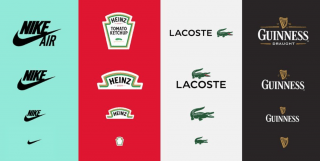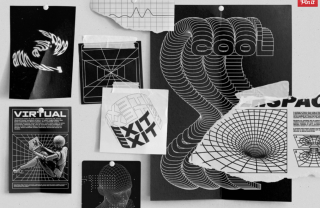A logo is much more than branding. It’s your business’s first impression and sets the tone in the mind of your customer.
It’s the face of your business, it represents everything about your company. It can be an overwhelming task to develop a logo for your business if you have no graphic design experience. ASBTDC is here to help with a two part blog series! If you haven’t read our first “Creating an Effective Logo” Blog, skim it over and come back. We will be building on the foundation of effective logos and diving deeper into logo creation. Part Two will cover font psychology, color psychology, and logo responsiveness, and more. Keep reading and ASBTDC will help you turn the daunting task of creating a logo into something that any business owner can handle.
Everyone judges a book by its cover, even if they refuse to admit it. People will judge your business by your logo.
It’s important to understand how fonts & colors affect the human brain when making a logo for your business. Tying the correct subconscious and conscious meanings will be essential in creating a logo that earns a spot in your consumer’s mind.
Imagine your best friend’s voice. The tone of voice, word selection, emphasis of certain syllables. You could recognize their voice anywhere, even if you hadn’t seen them in years. This is how you want your customers to identify your brand. Once they’ve been introduced, they could recognize it anywhere because of its distinguished nature and consistency across all platforms. Your logo is the talking head for this “brand voice.” I know that this can sound like a big task, but take it one step at a time.
Font Psychology
Here is a great chart that reviews how different font styles will speak for your logo. Don’t try to do too much with a font. Your logo serves a basic purpose of informing about your brand, it’s not just a design element.

This chart is from Digital Synopsis. If you’d like to learn more about Font Psychology check out their full article here. https://digitalsynopsis.com/design/font-psychology-emotions/
- DaFont.com offers a lot of free fonts, and they allow you to scroll through fonts that show an example of what your brand’s name would look like if you selected that font. If you plan on using Dafont.com, make sure you check out which fonts are available for commercial use. Even if you find a font that you like that is not, you can usually pay a small fee to buy the license for this font.
- Whether or not you end up using fonts from the website, make sure to note which ones you like. You can make a moodboard with screenshots like this and send them to a graphic designer in the future. This will ensure that you get a logo that expresses your vision for your business. Many designers will already have access to fonts that can be commercially used, so working with one can make that step of the process easier.
Color Psychology
Color is vitally important. Check out this chart to see why.

This chart is from Logobly.com. They have a great article covering business logos, color psychology and logo responsiveness here https://logobly.com/blog/logo-design/
Utilize a color palette to ensure a single tone of voice in your branding. Here are some questions to ask…
- Are your colors working together?
- Did you choose your brand’s colors purposefully, or did you just pick them because you like them?
- Do your brand’s colors have other meanings outside of your brand?
- Ex. Red, White, & Blue – USA
- Does your design look good in grayscale?
We recommend coolors.com. You can flip through color palettes & lock in colors that you think will be good for your brand. It’s not only helpful, but it’s also pretty entertaining to use. The site provides color codes that you can send to a graphic designer (on that moodboard) or plug into canva to make sure all your graphics match perfectly.
Questions to ask when making your logo…
Is my logo “responsive?”

This chart is another from Logobly.com. They have a great article covering business logos, color psychology and logo responsiveness here https://logobly.com/blog/logo-design/
How do you want customers to feel when they see your logo?
What strengths do you believe your brand has?
Who is your customer base?
What do you want your brand to be associated with?
- Cheap prices?
- Quality goods for premium prices?
- Style or a certain image (status symbol)?
- A lifestyle or group of people with similar interests?
Moodboards

Making a moodboard for your brand will also help you and any designers you may work with understand what feelings you are really going after in your logo. Here’s a great example of a moodboard below. This one’s for a stock brand that seems to be pretty futuristic. As you can see, everything is of the same theme, and a lot of ideas are represented. This will allow you to brainstorm, but also keep your thoughts organized. It will help your designer create something that matches what your vision is, but still utilize their creative abilities.
Your moodboard does not have to be perfectly designed or look really put together like this one. It can include sketches, screenshots, and even other brands that inspire you!
Remember, the most important thing in creating a logo is speaking with a single tone of voice across all your marketing platforms. Your logo is what will speak for your brand. Don’t be timid when creating a logo. If you know exactly what you want, go for it. If you don’t know what your brand needs, it may take some time. Regardless of your situation, don’t be afraid of change. Every business grows and changes with experience and time, and its logo can too.

